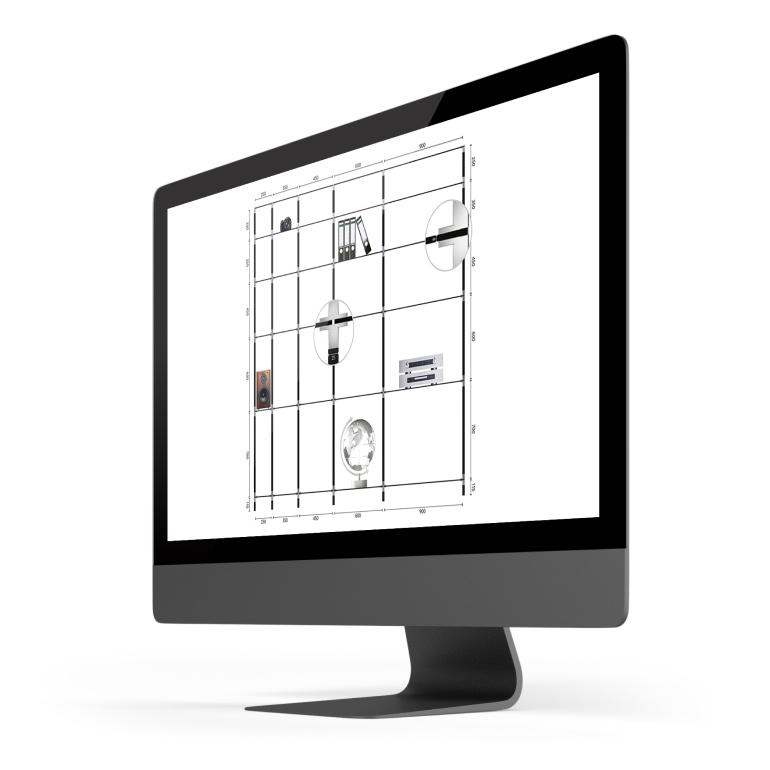The main task was to develop a system that allows potential customers to configure the rack and order it from one of the company’s dealers.
The key feature is a large and flexible space for changes implementation. The admin is able to add new products and accessories to the configurator without a developer’s assistance, and therefore without additional expenses. For that purpose, our experts developed a flexible admin panel. In 3D models, we created special connections and established a certain set of rules. Employees can add these rules when uploading new products to the system.
In the platform, we configured a flexible system for setting the default and available accessories and fixtures, which are supplied with racks. With JSON files and data import, our client can set the rules in the configurator and add all necessary details.
To achieve better flexibility, we’ve developed the functionality for copying 3D models. The original geometry of the model is not edited: the loaded model and elements created in the admin panel are copied. Then, based on these settings, a user can create new models by changing only some of the parameters.
Information on available products is downloaded from the client’s ERP system by importing several CSV files. This files describe various product characteristics: number, color, size, cost, etc.
Our client distributes their products through dealers, signing contracts under different conditions. Each dealer has its own set of data. So the configurations that the end customer can make by choosing a particular dealer can be limited.
Our specialists created a functional product cost calculation. The end customer sees the average cost of the product while constructing it. The final price is given by the specific dealer that the customer decides upon.
The shelves can be removed when creating a variety of combinations. The end customer can set the sizes of the shelves and accessories within the limits available. When ordering a racking of a non-standard size, the dealer receives a note created through data import for additional calculating the cost of the product.
We did set up the export geometry models of products in OBJ and DWG. The system allows working with models of these formats.
Our specialists had also to ensure the automatic generation of PDF documentation of the product. We implemented the creation of documentation that contains:
- Information about the maximum weight for each shelf.
- Information on the number of boxes and the procedure for packing pdoduct items.
- Product Schemes that include:
– a dimensional scheme (it draws external and internal elements with dimensions);
– a scheme with the numbering for spare parts and an indication of interchangeable elements and the compiling order.
- The list of materials the rack is made of.
We also implemented the ability to create a room with the necessary dimensions, interfering elements (windows, doors, furniture) and configure the required rack within this particular room. When the construction process is finished, the scheme of the rack with the necessary dimensions is saved in a PDF document.
The work was carried out using a waterfall methodology.
Our team communicated and created tasks in the client’s Jira. The client could always contact the team to resolve urgent issues.
